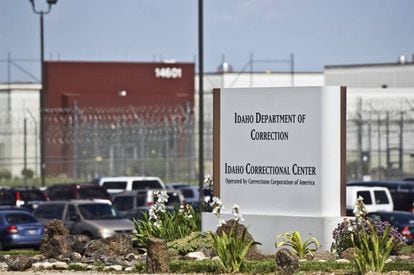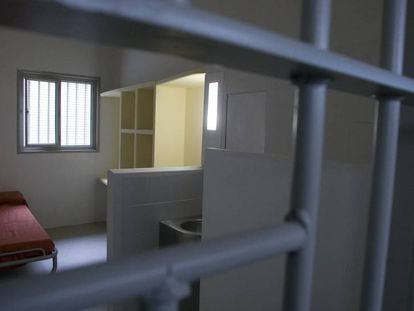United States government decides to end use of private prisons
The measure will affect one third of inmates living in privately run facilities in the country

The United States government announced on Thursday that it will phase out the use of private prisons to house federal inmates after officials determined that they are less effective and less safe than public correctional facilities. The decision will only affect contractors who operate federal prisons and just one-third of inmates living in privately operated penitentiaries. The measure, a heavy blow to the lucrative private prison business in the country with the largest inmate population in the world, comes in the wake of mounting concerns about the severity of the judicial system and may encourage some states to follow the federal government’s lead.
Deputy Attorney General Sally Yates announced the news in a memo that orders officials to not renew current contracts when they expire or reduce their scope. The objective is “reducing – and ultimately ending – our use of privately operated prisons,” Yates said.
The decision comes after a report published last week concluded that private facilities are worse than public prisons
The decision comes after a growing list of complaints began to flood in since a report published last week by the Justice Department’s Office of Inspector General concluded that private facilities are worse than public prisons: there are more fights, robberies and attacks. “They simply do not provide the same level of correctional services, programs and resources; they do not save substantially on costs,” Yates wrote.
The impact of the measure is, however, limited to the federal level. In 2014, 8.4 percent – 131,261 out of a total of 1.5 million – of US prisoners were living in privately run facilities. Of these 131,261, 40,017 – 19 percent of the total federal inmate population – were housed in private prisons. Therefore the majority, 91,244 prisoners living in privately run penitentiaries, fell under state jurisdictions. These prisoners make up 6.8 percent of the total inmate population in the states.
But the new measure will push forward the debate about privatization of the prison system, which started on the left and among activist groups, at a time when the number of inmates in the United States is on the decline as the Justice Department rolls back some of the tougher minimum sentencing laws.
Privatization began in the 1980s but its use skyrocketed in the last decade in step with an increase in the prison population. Between 1999 and 2014, the general US prison population grew by 10 percent but it spiked by 84 percent in private facilities. Privately run federal prisons saw an astronomical increase: 945 percent compared to 35 percent in the states.
Sign up for our newsletter
EL PAÍS English Edition has launched a weekly newsletter. Sign up today to receive a selection of our best stories in your inbox every Saturday morning. For full details about how to subscribe, click here
The growing prison population fed this new business sector. In 2014, American private prisons were a $4.8 billion business and made $629 million in profits, NBC reported, citing data from the market research firm IBISWorld.
As public correctional facilities became overcrowded, private prisons offered federal and state authorities the space and personnel they lacked. Many private companies lock in a certain amount of profit by including a clause for occupancy requirements in their contracts. For example, a contractor might require federal authorities to keep the facility 80 percent full at all times or pay an operating fee for housing empty beds. They also reduce costs to a minimum. According to some organizations, the zeal for saving money has led to incidents caused by lack of personnel and inadequate maintenance of facilities.
English version by Dyane Jean François.












































